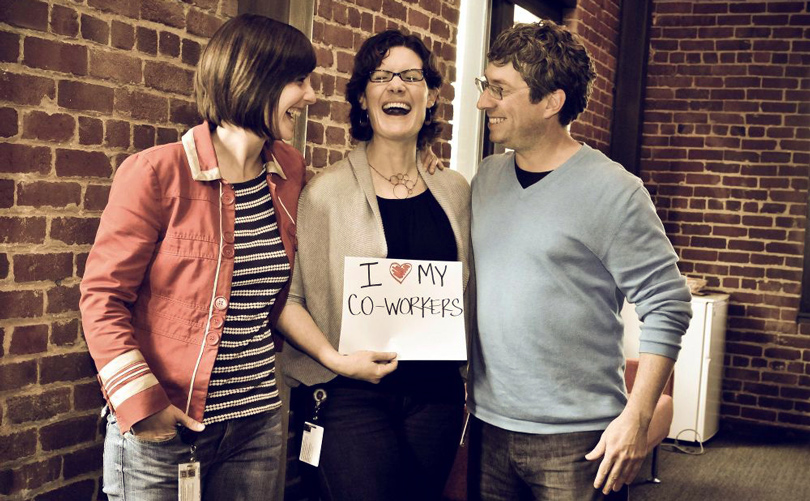It often takes a personal crisis to impel someone to embark on an active mindfulness program.
That’s how it was for Mark Bertolini, CEO of corporate insurance giant Aetna.
In 2004, Bertolini was on a skiing trip in Vermont when he smacked into a tree and tumbled down a 30-foot-deep ravine. He fractured five of the vertebrae in his neck and severed a bundle of nerves running from his left arm to his spinal cord. He underwent extensive medical treatment and tried a full menu of pharmaceutical painkillers, including OxyContin, Vicodin and Fentanyl, but he was unable to make a full recovery. The pain persisted.
“It was as if somebody were burning my arm with a torch all day long, and to this day it feels this way,” Bertolini told the New York Times in 2015. “It’s never stopped.”
Like many in his predicament, Bertolini turned to alternative healing modalities, including acupuncture and yoga. He found these to be beneficial and ended up embracing many elements of the yogic path—sporting amulets emblazoned with Sanskrit mantras and installing a large statue of the elephant-headed deity Ganesha in his executive office. But he wasn’t just flaunting the external trappings of yoga culture and philosophy. In a mindful moment of altruism, Bertolini reportedly gave his lowest-paid workers a 33.3 percent salary hike. And he decided to share with all of them the benefits of yoga and meditation.
In 2012, he set up a pilot mindfulness program at Aetna, partnering with the Integrative Medicine Program at Duke University, the American Viniyoga Institute (AVI) and eMindful, a company that creates mindfulness apps, programs and online courses. Aetna employees took classes in yoga and mindfulness meditation. The Duke medical team monitored key stress indicators, such as heart-rate variability and levels of the stress hormone cortisol. Participants also filled out questionnaires aimed at assessing how much they felt yoga and meditation were benefitting them.
Why all the data-gathering, EEGs and lab work? While yogis may place their faith in their higher selves or the teachings of spiritual masters, the corporate world places its fervent belief in “metrics”—numbers and statistics that substantiate a particular viewpoint or course of action. “Show me the metrics” is the power mantra in the corporate universe. And recent decades have brought an abundance of metrics confirming the physical and psychological benefits of yoga and meditation.
That kind of hard scientific data is what makes it all seem real—less “woo woo”—for Wall Street power brokers such as Bertolini and executives at Goldman Sachs, BlackRock, General Mills and Google, all of whom have instituted corporate mindfulness programs of one sort or another at their companies.
Not that they’ve lost sight of the bottom line. The
studies all show that meditation can increase a person’s productivity
and emotional resilience. And a happier, more productive worker is one
who will yield more profit
for a company—and be less likely to burn
out or freak out in the shark tank of corporate life. Ironically, the
very people who designed and built the shark tank are now finding that
they stand to gain from embracing what is pretty much its
antithesis…within reason, of course.
But Bertolini was into it with his heart as well as with his head. He’d experienced profound pain, and pain is one of the most efficient, if least pleasant, catalysts for compassion.
Still, there were skeptics within his own company who he had to convince. To that end, the Duke University study was a good way to slip some mindfulness into Aetna’s corporate culture. Duke set up the lab work, eMindful created a custom meditation app for employees, and American Viniyoga Institute director Gary Kraftstow created a program, adapting the ancient practices of hatha yoga to the boardroom.
Stephanie Harding is the yoga teacher and yoga therapist who administered and taught the AVI yoga program at Aetna’s corporate headquarters in Hartford, Connecticut. She’d first gotten into yoga as a replacement for jogging during a pregnancy in the 1990s. Much like Mark Bertolini, she fell in love with yoga. Harding completed her training at the American Viniyoga Institute in the mid 2000s and remains a member of the AVI staff as a part-time consultant.
“In the AVI training, we learn about stress reduction,” she says. “There are a number of people in our training who come from the corporate environment—including me.”
So Harding was ideally suited to bring yoga into Aetna. “The class is designed for people who have never done yoga before,” she says. “You don’t have to be flexible. You don’t have to get into crazy poses. The movement was very slow and mindful—moving with the breath—because that’s the style of Viniyoga.”
The classes were free of charge to employees and strictly on a voluntary basis—although participants in the initial study were screened to fit certain statistical parameters.
“Because it was initially a scientific study, there was a selection process to get into the program at first,” Harding explains. “Employees had to agree to fill out questionnaires and participate in certain tests. So there was a core number of people who were in the study. And then, after the study was published in the Journal of Occupational Health Psychology, it continued as a regular yoga class.”
The class sessions were much like the beginner’s yoga classes Harding teaches to the general public, with a few exceptions. “First of all, we were giving people some fairly scientific information on why yoga helps stress, and how stress affects the body,” she says. “I sometimes do that in my regular classes as well—but not to the same extent. Also, because we were in a corporate environment, there was no Sanskrit, no chanting, no philosophy. It was strictly movement and breath. That was the main difference between this and other classes I teach. We treated yoga as an intervention for stress.”
And did it work? “The people who stuck with it definitely felt the benefit,” Harding says. “I could see how they were when they walked into class—the tension in their necks. You could see their shoulders hunched up, almost to the ears. And then by the end of class, they’re in a resting pose and you could hardly get them up off the floor. They were just so relaxed.”
So, did Bertolini and other top Aetna executives don their Lululemon yoga togs and get into a Downward-Facing Dog pose alongside the marketing intern, the regional assistant sales manager and the guy from maintenance? Not quite.
“At least in the classes that I taught, which were at Aetna’s headquarters, the people I worked with most were either call-center people or IT people,” Harding says. “But sometimes, not too often, you could tell that there were management people who would also attend.”
Sustaining attendance is one of the major challenges of yoga classes in the workplace, and Aetna proved no exception.
“People would drop in and out,” Harding says. “That’s what it’s like in any yoga classes, but in a corporate environment it can be even worse. The pull of work sometimes makes it difficult for people to attend. They’re traveling or they have to be in a meeting. So there would be a limit to what they could get out of it.”
But even a little benefit can make a big difference. Approximately 13,000 Aetna employees (roughly one quarter of its 50,000-strong workforce) attended at least one class, either in Hartford or at another Aetna office in California. According to Aetna’s figures, those who did reported a 28-to-36 percent reduction in stress levels, a 20 percent improvement in the quality of their sleep and a 19 percent reduction in any pain they were experiencing. Cortisol levels and heart rate variability also decreased measurably.
“The biostatisticians were beside themselves,” Bertolini told the Times.
Worker productivity went up, gaining an average of 62 minutes per week, which Aetna values at $3,000 per employee, per year. So if the 13,000 employees who took mindfulness training all added $3,000 to Aetna’s annual profits, that amounts to an impressive $39 million. And if all 50,000 Aetna employees were to get mindful to the tune of $3,000 annually, the corporation would enjoy an even more impressive $150 million bump in profitability. And that’s not even counting the additional $2,000 per employee savings in health care costs that Aetna calculates it can reap from the health benefits of mindfulness. Metrics like these can make mindfulness an easy sell to shareholders.
But of course you can’t put a price on happiness. On a purely subjective level, that was perhaps the greatest dividend to be reaped from yoga and mindfulness training at Aetna.
“People would tell me how much they appreciated the class and how much better they felt afterwards,” Harding says. “And we’d have returnees also. There was a core group of people who, as much as they could, would come back to class. So all of that has to be a positive outcome. Do they then carry goodwill, calm and serenity back into the workplace? That I don’t know.”
But if some of that good feeling permeates the workplace for even an hour after a yoga class or mindfulness break, that’s a significant step forward. Of course, if corporations were truly to embrace mindfulness, there would be no more predatory lending practices or insurance policies, no more insider trading, toxic assets, cyber-monopolies or employee intimidation or harassment. That’s certainly a beautiful thought—a possibility to hold in mind, a dream to cherish.
Meanwhile, in the here and now, mindfulness is all about baby steps—accepting gradual progress rather than searching for quick fixes and magic bullets. “Be the change you wish to see in the world,” Mahatma Gandhi famously said. In other words, it all starts with you. True mindfulness will not render you passive or complacent—a better corporate robot.
Instead, it will help you to become more actively compassionate and committed to making any situation better for all involved. Bringing a little mindfulness into the office might seem a small thing. But its positive consequences could be bigger than you might imagine.
From: Parade



